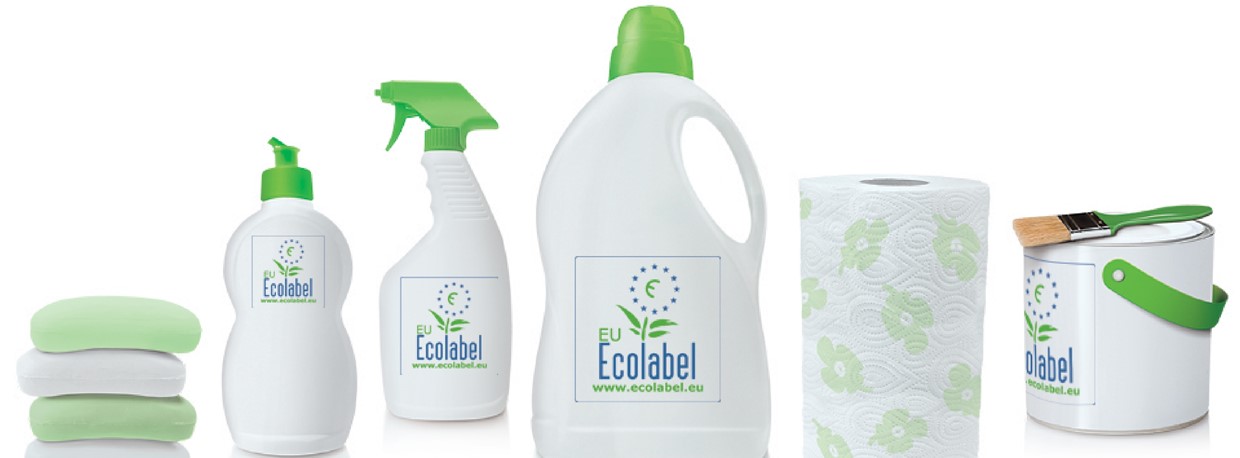Purpose
The purpose of the regulation is to lay down rules for the establishment and application of a voluntary EU Ecolabel scheme for products consumed or distributed on the European market.
Key definitions
- Product group: A set of products that serve similar purposes and are similar in terms of use, or have similar functional properties, and are similar in terms of consumer perception.
- Environmental impact: Any change to the environment resulting wholly or partially from a product during its life cycle.
Decision-support tools
- Life cycle assessment
Risk management procedures
- EU Ecolabel criteria shall set out the environmental requirements that a product must fulfil in order to bear the EU Ecolabel. For determination of the criteria, the following must be considered: the most significant environmental impacts, the substitution of hazardous substances by safer substances, the potential to reduce environmental impacts due to durability and reusability of products, among others.
Monitoring requirements
- The user of the EU Ecolabel shall permit the competent body which has awarded the EU Ecolabel to the product to make all necessary investigations to monitor compliance with the product group criteria and the requirements for EU Ecolabel award and terms and conditions of its use.
- For products that have been awarded the EU Ecolabel, the competent body shall on a regular basis verify that the product complies with the EU Ecolabel criteria and assessment requirements.
Enforcement
- If the competent body find that a product bearing the EU Ecolabel does not comply with the relevant product criteria or that the EU Ecolabel is not used in accordance with the terms and conditions of its use, it shall: 1)prohibit the use of the EU Ecolabel on that product, or, 2) in the event that the EU Ecolabel has been awarded by another competent body, it shall inform that competent body.
Share this regulation
-
The European Commission
Establishing a European Union Ecolabelling BoardThe European Commission shall establish a European Union Ecolabelling Board (EUEB) with the representatives of the Member State competent bodies and other interested parties. The EUEB shall among others contribute to the development and revision of EU Ecolabel criteria and to any review of the implementation of the EU Ecolabel scheme.
-
The European Commission
Establishing common register over EU Ecolabel awardsThe European Commission shall establish a common register and update it regularly. That register shall be publicly available on a website dedicated to the EU Ecolabel.
-
EU Ecolabel operators
Application to use the EU EcolabelOperators who wish to use the EU Ecolabel must apply to the competent bodies in accordance with the following rules: a) where a product originates in a single Member State, the application shall be presented to a competent body of that Member State; b) where a product originates in the same form in several Member States, the application may be presented to a competent body in one of those Member States; c) where a product originates outside the Community, the application shall be presented to a competent body in any of the Member States in which the product is to be or has been placed on the market.
-
The competent body
Notification to the European CommissionThe competent body which has awarded the EU Ecolabel to a product shall notify the European Commission thereof.
-
Legislative proposal published
July 16 th, 2008Proposal for a Directive of the European Parliament and of the Council establishing a framework for the setting of ecodesign requirements for energy related products
https://eur-lex.europa.eu/legal-content/EN/TXT/?uri=CELEX%3A52008PC0399 -
Committee referral announced in Parliament, 1st reading
September 02 th, 2008Committee referral announced in Parliament, 1st reading
https://oeil.secure.europarl.europa.eu/oeil/popups/ficheprocedure.do?lang=en&reference=2008/0151(COD -
Vote in committee, 1st reading
February 17 th, 2009The Committee on the Environment, Public Health and Food Safety adopted the report amending, under the first reading of the codecision procedure, the proposal for a directive of the European Parliament and of the Council establishing a framework for the setting of ecodesign requirements for energy related products
https://oeil.secure.europarl.europa.eu/oeil/popups/summary.do?id=1053151&t=e&l=en -
Decision by Parliament, 1st reading
April 24 th, 2009The European Parliament adopted by 394 votes to 13, with 3 abstentions, a legislative resolution modifying, under the first reading of the codecision procedure, the proposal for a directive of the European Parliament and of the Council establishing a framework for the setting of ecodesign requirements for energy related products (recast)
https://oeil.secure.europarl.europa.eu/oeil/popups/summary.do?id=1075950&t=e&l=en -
Act adopted by Council after Parliament's 1st reading
September 24 th, 2009Act adopted by Council after Parliament's 1st reading
https://oeil.secure.europarl.europa.eu/oeil/popups/ficheprocedure.do?lang=en&reference=2008/0151(COD -
Final act signed
October 21 th, 2009Final act signed
https://oeil.secure.europarl.europa.eu/oeil/popups/ficheprocedure.do?lang=en&reference=2008/0151(COD -
End of procedure in Parliament
October 21 th, 2009End of procedure in Parliament
https://oeil.secure.europarl.europa.eu/oeil/popups/ficheprocedure.do?lang=en&reference=2008/0151(COD -
Final act published in Official Journal
October 31 th, 2009Final act published in Official Journal
https://oeil.secure.europarl.europa.eu/oeil/popups/ficheprocedure.do?lang=en&reference=2008/0151(COD





